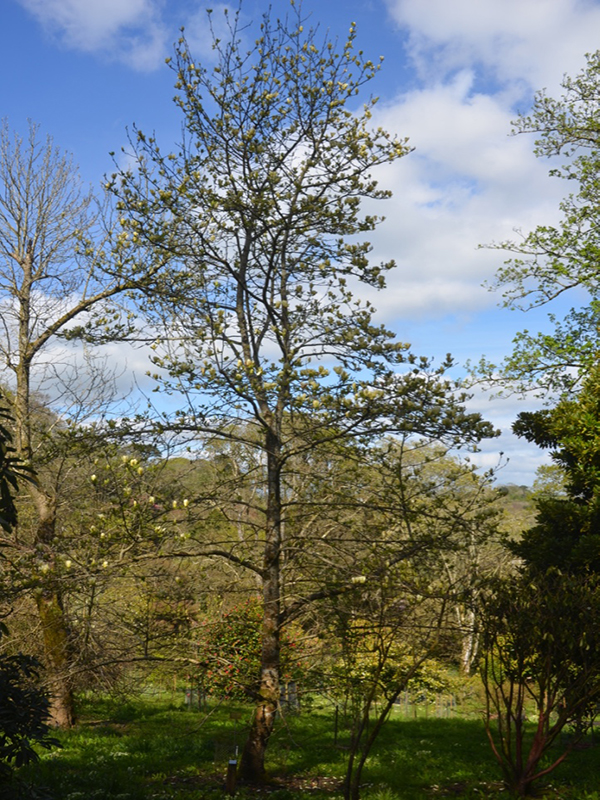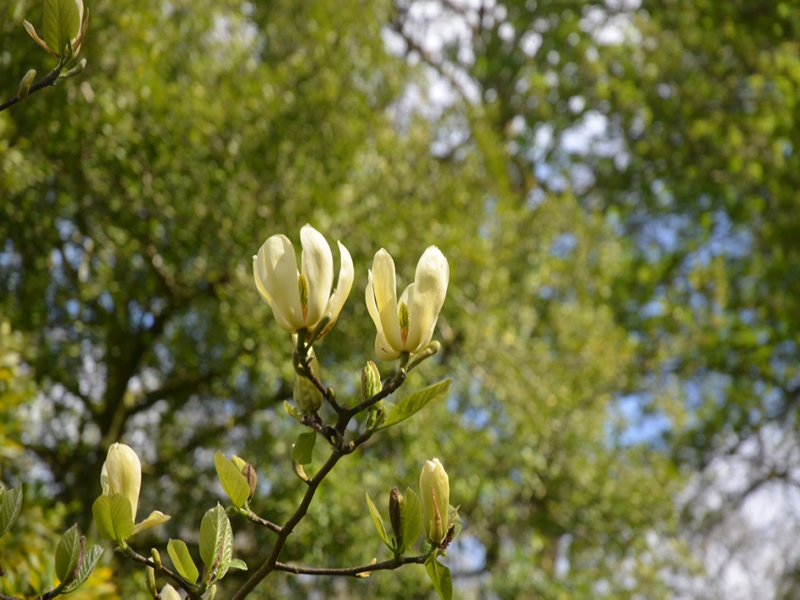Magnolia x acuminata 'Butterflies' (Butterflies Magnolia)
Botanical Information
| Family | Magnoliaceae |
| Genus | Magnolia |
| Species | x acuminata |
| Cultivar | 'Butterflies' |
| Category | Woody |
| Type | Tree (deciduous), Shrub (deciduous) |
| Origin | ‘Butterflies’ is a deciduous hybrid magnolia resulting from a cross between M. acuminata (seed parent) and M. denudata (pollen parent). |
| Pronunciation |
Details
| USDA Hardiness Zone | 5 - 9 |
| USDA Hardiness Ref. | |
| Canadian Hardiness Zone | 6- 9 |
| Canada Hardiness Ref. | |
| RHS Hardiness Zone | H6 |
| RHS Hardiness Ref. | |
| Height | 7 m |
| Spread | 3 m |
| Growth | Medium |
| Flowering Period | March, April |
Description and Growing Information
| Shape | A compact pyramidal form. |
| Landscape | Excellent specimen or accent for sunny areas in the landscape where spring flowers can be appreciated. |
| Propagation | By softwood cuttings in spring or early summer, or semi-ripe cuttings in late summer and autumn. |
| Cultivation | Grow in rich, neutral to slightly acidic, medium moisture, well-drained soils in full sun to part shade. |
| Pests | Potential disease problems include leaf spots, anthracnose, canker, dieback and powdery mildew. Potential insect problems include weevils, snails, scale, and thrips. |
| Notable Specimens | The A.M. Cuddy Gardens, Strathroy, Ontario, Canada. Caerhays Castle, Goran, Cornwall, United Kingdom. |
| Habitat | Horticultural origin. |
| Bark/Stem Description | An upright, pyramidal tree to 7 m tall with a single trunk. It also grows as a multi-stemmed shrub. |
| Leaf Description | Dark green leaves to 20 cm long, oblong-elliptic with cuspidate tips. |
| Flower Description | Rich yellow, cup-shaped flowers with red stamens. Upright, tulip-like, yellow flowers to 10-12.5 cm across, each flower has 10-16 tepals. Flowers have a light lemon oil aroma. |
| Fruit Description | A reddish-green at maturity. |
| Colour Description | Foliage remains attractive throughout the growing season, but produces little autumn colour (grey-brown). |
| Texture Description | Flowers typically cover the tree with a profuse bloom for about 7-9 days. Foliage does not begin to emerge until the tepals have fallen. |
Photographs
Magnolia x acuminata 'Butterflies', form, The Pascoe gardens, Strathroy, Ontario, Canada.
Magnolia x acuminata 'Butterflies', flower, A.M. Cuddy Gardens, Strathroy, Ontario, Canada.
Magnolia x acuminata 'Butterflies', form, The A.M. Cuddy Gardens, Strathroy, Ontario, Canada.

Magnolia x acuminata 'Butterflies', form, Caerhays Castle, Goran, Cornwall, United Kingdom.

Magnolia x acuminata 'Butterflies', flower, Caerhays Castle, Goran, Cornwall, United Kingdom.